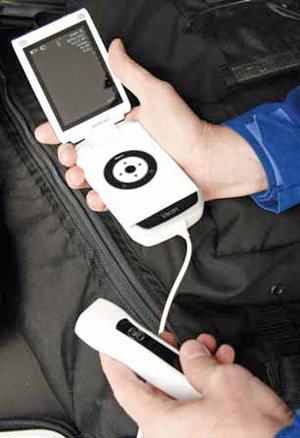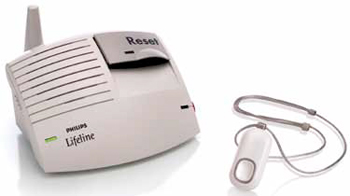
FEBRUARY 2012: Referring to applications of medical electronics for chronic disease management, post-operative care and general wellness, it is well known that portability of medical electronic devices is the key to accessibility and affordability of health diagnostics and other medical solutions. The portability and customisation of medical electronic devices has been made possible by advancements in the electronics technology.
Key enablers
With newer chip designs and product development due to a huge demand in consumer and mobile electronics, the future is looking bright with designs based on smaller footprints, higher efficiencies and much more functionalities.
Even the design and size of AC-DC and DC-DC converters used in power supply modules is getting reduced due to better component availability and specifications. The innovative selection of ceramics and other materials in place of capacitors and other discrete components leads to smaller sizes and better ratings to accommodate.
The designers’ choice is gradually moving from highly flexible field-programmable gate array (FPGA) to application-specific integrated circuit system-on-chip (ASIC-SoC) and application-specific standard product (ASSP), which includes networking, telecommunications, computing, signal processing, analogue-to-digital converters, wireless and medical applications on the same semiconductor with low power consumption.
With a lot to be seen in the times to come, there is a clear advantage of SoCs whereby dynamic system designing can be highly optimised resulting in cost-effective final medical electronics application with inbuilt functions of device diagnostics and self-test algorithms for error-free service. SoC-based solutions fit aptly in medical electronics applications as these serve a wide range of functionality at low power consumption, robustness, reliability and portability resulting in better return on investment (ROI).
Research and development of advanced algorithms and image processing techniques has resulted in a low-dose, high-contrast computed tomography (CT) solution for the patients’ benefit. Clarity of CT scan has improved with introduction of nano panel detectors and now the scanner can go up to 320 slices.
Especially in medical imaging applications, the flexibility offered by ASIC comes in handy when dedicated core data paths can be customised and designed for processing heavy data flow in the range of 2 GB per second. So application-specific scalability can be achieved for varying data flows in different applications including X-ray, positron emission tomography (PET), CT scan and magnetic resonance imaging (MRI). The performance levels achieved from ASICs are much higher than any other software-programmable chip architecture or fixed-use central processing units (CPUs). However, complex programmable logic devices (CPLDs) and FPGAs are catching up with a benefit of flexibility to change post-design with minor changes in the software.
What’s available?
The burden of lifestyle and non-communicable diseases has raised the demand of medical electronics solutions which can be used at home for monitoring and detection purposes. This leads to a sharing of responsibility of your own health and shifting the gears from remedial action to preventive diagnostics. Innovative R&D in diagnostics has changed the way sensors were realised earlier. Presently, sensors have become smaller in size and work on smaller batteries for longer durations.
The next-level devices include monitoring and control. For ex-ample, insulin injectors monitor the blood sugar level and then inject appropriate medication volume in the body, forming a closed-loop system with monitor and control functionalities.
Portability is being introduced now in the surgical procedures too. More and more electronic devices (like cutters, reamers and drills, etc) used in surgery are being re-designed by many companies with portability in mind. Surgical procedures will then cross the barriers of access if portability can be introduced to a large extent in the operation theatres.
Teleradiology enables the transfer of acquired images from one diagnostic centre or hospital to anywhere across the world through the Internet where the caregiver can refer to it and suggest further course of treatment. Portable electrocardiogram (ECG), electromyography (EMG) and ultra-sound machines offer a quick diagnostic solution in situations where it may not be possible to move the patient and to provide healthcare in villages and remote areas. With digital diagnostics, nowadays, patients do not need to carry X- ray or ultrasound reports to the doctor for diagnosis. All reports and test data can be encapsulated into digital media and can be accessed anywhere on a computer.
Battery life plays an integral role in the functionality and success of portable medical electronic devices. A two-way approach of developing batteries with longer lives as well as developing devices that consume less power will form a solution. Research is underway on these aspects and new products are being introduced in the market.
With the spread of mobile phones and their usage, these have become a target device for medical applications. In recent years, there has been a lot of focus on development of mobile applications for Android, Blackberry, iPhone, etc.









